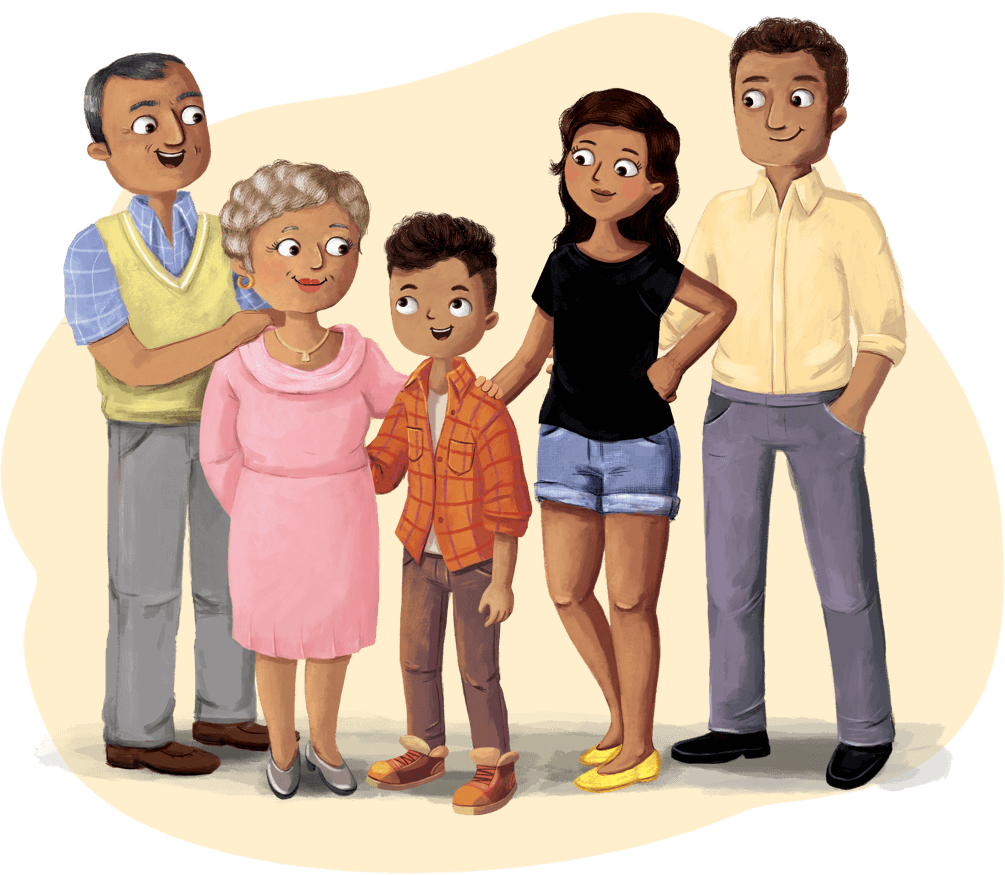GABRIEL CARDOSA-SILVA
The Color of My Cultures
I was accepted into my first art show this year. The museum was putting on an exhibit to celebrate el Día de la Independencia de México, and they invited local artists and professional Mexican artists from all over the world. I submitted a work I had already done but then got to make a new one about the theme of Color Your Culture. Being Mexican-American, I wasn’t sure what to paint exactly. Two flags? Two self-portraits? I felt a lot of pressure to get it right because my dad loved Mexican art, and he invested so much time in mine. We’d go to museums together, and whenever we’d pass a painting by a Mexican artist, we’d stop and look at it for a little longer.
“Look at the way she uses the blue,” he’d say. Or, “He uses a traditional Mexican color palette; you can tell from that deep shade of red.”
I wanted my painting to be authentic, and admired, just like the ones my father and I would see in the museums.
I tried a few different options. I painted two maps, one of my neighborhood and one of Mexico City, where my mom’s family lives. I sketched out two flags, the Mexican flag and the American flag, but neither felt right. Painting my culture wasn’t something I’d ever thought about before, and it was harder than I’d expected.
When I talked to my dad about my artist’s block, he told me, “You need to learn to feel it, hijo.”
On the weekend before el Día de la Independencia, my family had our usual celebration. My abuela made chiles de nogado and agua de tamarindo; Mom strung red, green, and white lanterns up on the roof; and Dad bought sparklers to give to all the kids in the building. At the party, I couldn’t stop thinking about my painting. The deadline was coming up, and I had nothing to submit. As I stood off to the side, watching my friends and family celebrating Mexican Independence Day, I realized this was my painting. My Mexican-American heritage was right in front of me.
I sketched what I saw: Mom and Abuela Silva laughing, friends from my building who were from all different cultures making shapes with sparklers, and Dad dancing to Mexican music by the food table. A few weeks later we went to the museum to see the exhibit. Hanging next to a bright yellow portrait of a butterfly was my painting: La Celebración. My family and friends, alive and vibrant, Mexican and American, dancing on a canvas in primary colors.
Making that painting helped me to see that there isn’t a line between being Mexican and American. It’s all part of who I am and who my family is. I couldn’t paint two separate maps or two separate flags because they can’t be separated. Having my art in a museum, in an exhibit, celebrating all the different ways that one can be Mexican, was special. I want to make sure my paintings always reflect that so when someone looks at it they can point to a color and recognize where I come from just like my dad does with the reds and blues.
As I was looking at my work and taking in the moment, my dad came and stood next to me. He pointed to the shade of blue I’d used for the sky. “You learned to feel it,” he whispered and draped his arm over my shoulder.






